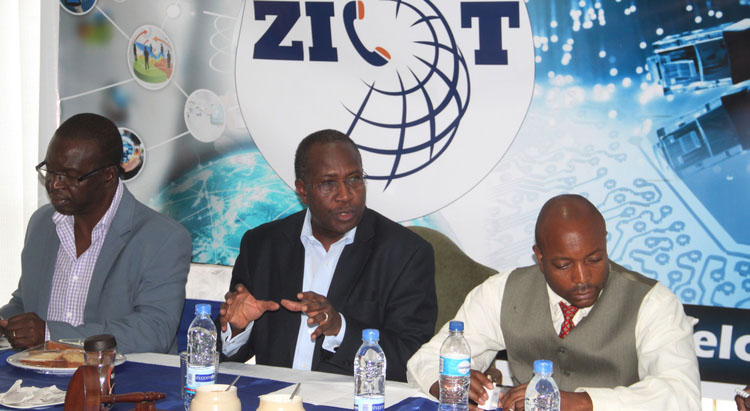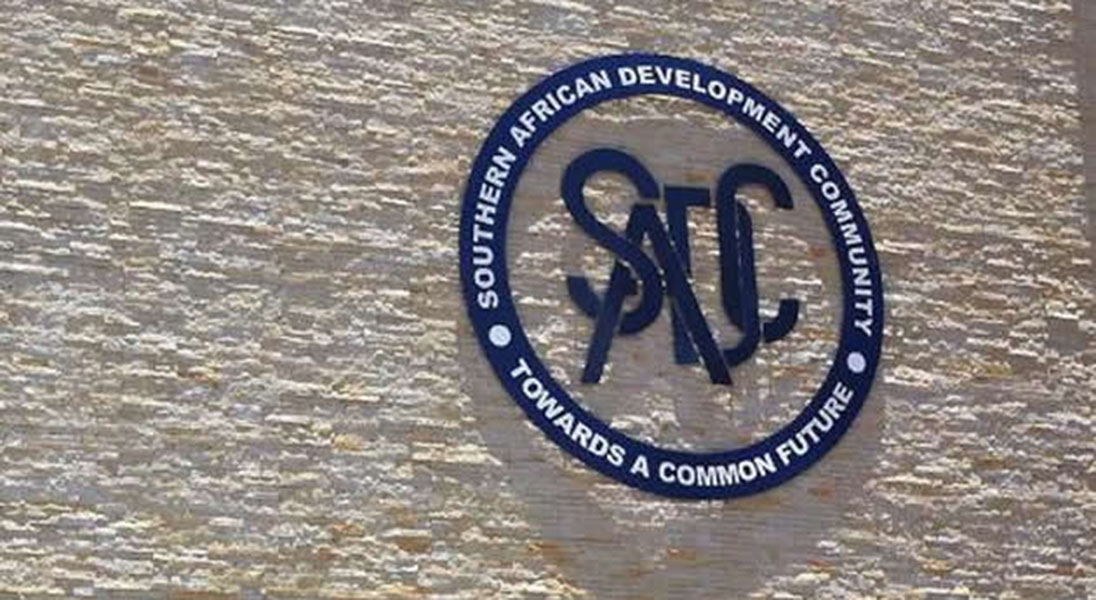Zim’s Share ownership schemes: A mixed bag
- By Zimpapers Syndication |
- 29 Apr, 2025 |
- 4

Rumbidzayi Zinyuke Syndication Writer ---
Zimbabwe’s efforts at redistributing wealth through Empowerment Schemes has registered various levels of success over the past seven years, raising questions on whether or not it would be prudent for government to revisit the whole process and correct many things that might have gone wrong.
Employee and Community Share Ownership Schemes are critical in ensuring that locals obtain significant benefits from the country’s economic activities under the Indigenisation and Empowerment Act.
The schemes are also envisioned in the Indigenisation and Economic Empowerment (General) Regulations of 2010.
But of the over 100 Employee Share Ownership Trusts (ESOT) that have been approved by government since 2010, probably less than half have been successfully implemented while only 21 of the 61 Community Share Ownership schemes (CSOS) are operational.
Deputy Minister of Youth Development, Indigenisation and Empowerment, Mathias Tongofa, in 2015 said a total of $134 million had been pledged to different Community share ownership schemes by qualifying businesses but only $38.3 million had been deposited into their bank accounts. Of this amount, $14.7 million was channeled towards development projects while the remaining $23 million remained banked.
The figures are paltry to say the least.
They barely support the notion that employees and local communities whose natural resources are being exploited, must have a say through guaranteed shareholding in these companies.
But this is not to say that the empowerment drive has been a total waste of time and resources. There are companies that have successfully launched them and made positive changes to the lives of the beneficiaries.
Zimplats is one such company.
The platinum producer ceded 10 percent of its shareholding to the Mhondoro-Ngezi-Chegutu-Zvimba Community Share Ownership Trust and pledged $10 million to help operationalize the trust.
The $10 million was largely invested on the money market and to date, the CSOT has realised more than $2 million return on investment, which has been used to fund community projects.
Earlier this month, the firm also concluded the issuance of a 10 percent stake, valued at US$95 million to its Employee Share Ownership Trust.
Also worthy-noting is Gwanda CSOT, which received shares from Caledonia’s Blanket Mine, Gaths Mine and Pretoria Portland Cement (PPC) since its launch in 2012.
The companies pledged $6, 8 million to the trust and reports show that by February last year, the CSOT had spent over $2, 5 million on income and developmental projects.
Unki also paid $10 million to the Tongogara Community Share Ownership Trust with 24 wards receiving $25 000 each that was channeled towards socio-economic development projects.
The scheme achieved much in its first phase when it constructed a new school, which accommodates about 400 pupils, constructed a new dam, a mortuary and a shelter for expecting mothers at Zvamabande Rural Hospital
In Zvishavane, Mimosa paid $10 million to Zvishavane CSOT, which has been used mostly for building classroom blocks and renovating old structures.
However, the Zvishavane Trust was marred by fights after the National Indigenisation and Economic Empowerment Board (NIEEB) ordered the Trust to cede half of the $10 million given to it by Mimosa Mining Company to the Mberengwa Community Share Ownership Trust since the mine’s operations are in both districts, which should benefit equally.
The trust argued that Mimosa operations covered a bigger area in Zvishavane than in Mberengwa hence it was unfair to share the seed money equally.
Zvishavane Trust said they had made plans around the $10 million pledge and any changes would mean foregoing some developmental projects. This was because they had already used the $4 million, which had initially been released by Mimosa so they would only be left with $1 million after giving Mberengwa its share.
The Trust spent such a huge amount of money on projects and failed to invest some for future use. Such a scenario is worrisome.
This is a problem that many trusts have faced. They rushed to make renovations and build a few classroom blocks among other projects, which is all good, but they did not project how they would continue such work once that money was exhausted.
Unlike the Mhondoro-Ngezi scheme, and a few others, most of trusts have actually run out of cash to fund projects.
The absence of proper investment plans left too many loopholes that exposed the funds to looting and mismanagement.
The money was just sitting in bank accounts waiting for trust members to make withdrawals and use as they wished.
It wasn’t tied to any market, which would give good returns from that investment.
According to the Zimbabwe Environmental Law Association (ZELA), one of the main reasons CSOTs failed to live up to expectation was that they were not run along strict financial management, accounting, business ethics and principles.
“Once they were established, interested parties that included chiefs, headmen, youths, politicians, employees and administrators saw them as cash cows...in the melee that ensued, mechanisms to promote accountability and transparency were forgotten,” said ZELA in a 2016 report titled ‘The Legal and Economic framework for natural resource related statutory funds in Zimbabwe’.
This brings us to the Marange-Zimunya Community Share Ownership Trust, which stole the show for mismanagement and lack of accountability in CSOTs.
The Trust was mired in too much controversy.
Five diamond firms that were operating in the Marange area reportedly pledged $10 million each to the CSOT but as it later turned out, no such pledges were ever made. The trust only received $400 000 from the firms.
Not only was this paltry amount a mockery to the community of Marange, which was losing billions of dollars’ worth of diamonds extracted by these companies and getting nothing in return, but an insult to the thousands of families that had been displaced from their ancestral homes to pave way for the mining activities.
Looting and misappropriation of these paltry funds by chiefs and powerful politicians became salt on an open wound.
This is not the only example of a failed Empowerment Trust, there are many others such as the Hwange CSOT where communities did not receive anything because companies in that area had not been performing well.
Other companies were just plainly stubborn and refused to contribute towards these trusts.
Big mining companies, such as Zimplats, Mimosa, Unki, Caledonia and PPC are among those that already have functional employee schemes alongside community share ownership schemes.
The difference with the administration of the ESOS is that the stock given to employees are held in the scheme’s trust until the employee retires or leaves the company, or find diversification opportunities, creating an opportunity for workers to amass long-term savings and benefits from their work.
There is no cash given to the Trust for projects, as was the case with the CSOTs but employees get to enjoy the benefits whenever the company declares a dividend.
Existing literature on ESOSs contends that there is a positive relationship between ESOSs, firm performance and employee performance.
Analysts say firms appear to increase production and profitability and improve employees’ dedication and sense of ownership insofar as they increase their financial risk if the companies do not perform well.
Companies that have set up their ESOS include but are not limited to BAT (10 percent), PPC (5 percent), Meikles (10 percent) and Old Mutual.
Schweppes Zimbabwe Ltd also launched its Employee and Management Share Ownership Scheme in 2011.
The Schweppes deal was structured in such a way that Coca-Cola Ltd, a foreign-owned firm, which used to have controlling shares in Schweppes Zimbabwe Limited, disposed of a 51 percent stake to employees.
This resulted in management getting 20 percent equity while workers acquired a 31 percent stake in the beverages manufacturing company.
Delta has been gradually increasing the number of shares to the beneficiaries of its share option scheme on the Zimbabwe Stock Exchange. The share option scheme allows employees to buy shares in their employer at below market value. The company however needs to keep swelling those shares in issue to become fully compliant with the country’s indigenisation law.
But despite a generally positive response from most companies, there have been exceptions.
Masawara’s acquisition of BP-Shell assets in the country in 2010 and the subsequent setting up of FMI Energy Zimbabwe is one such case.
Following the acquisition, employees in the firm felt that the deal had left them out in the cold, as Masawara reneged on pledges made to the Ministry of Youth Development, Indigenisation and Empowerment in respect of compliance to the indigenisation law.
Information showed that part of the BP-Shell deal included a 10 percent ESOP component, which went wrong because FMI wanted to set up a management-run trust, as opposed to one run by employees.
NIEEB then called for the revocation of the deal.
Although they are a critical component of the local indigenisation and economic empowerment drive, employee share ownership schemes are commonplace across the globe.
In Mauritius, there is the employee share incentive plan (SIP), which enables employees to acquire shares, which they are not allowed to resell for a certain number of years. The country has also put in place measures to ensure that employers enjoy benefits that include advantages of an international financial centre with no capital gains tax, no withholding taxes, a low tax-base, among others.
In South Africa, the Broad-based Black-Economic Empowerment (BBBEE) initiative has been bearing fruits for some years now.
Employees of companies such as mining giant Kumba Iron Ore have been getting huge payouts since the launch of the employee share initiative in 2006.
While the scheme was designed to promote economic empowerment among historically disadvantaged permanent employees below managerial level, employees have contributed daily to meet production targets and make the company billions of Rands in profits.
The United States also has approximately 11 300 employee share ownership plans for over 13 million employees.
What has contributed to the success of these countries’ schemes is government planning and monitoring. While providing tax incentives for the companies, governments have also made sure that schemes bring tangible results to their beneficiaries.
In the case of Zimbabwe, experts believe government needs to revisit some of the schemes, particularly the community schemes and make sure that companies not only donate cash, which can be abused, but also give locals a stake in their companies so that future generations continue benefiting in years to come.
ZELA says most of the CSOTs in Zimbabwe operate as disguised corporate social responsibility structures, not CSOTs per se.
This is what government needs to address if indigenous people are to continue benefiting from economic activities in their communities.
No Comments














Comment